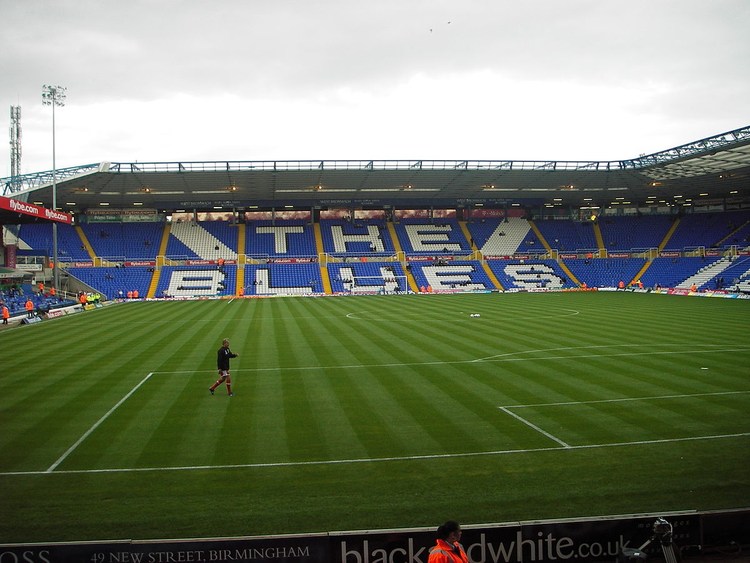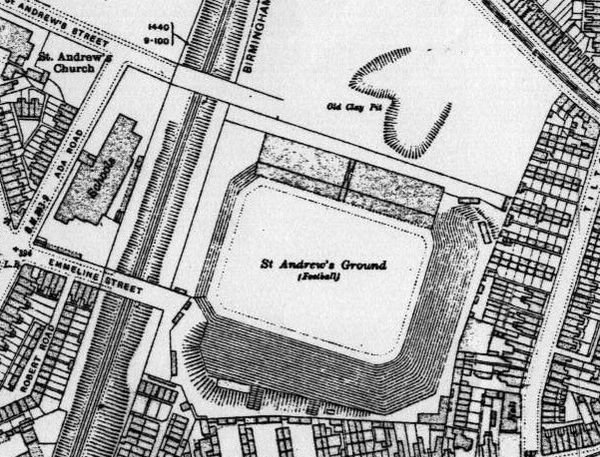
Look at the history of Birmingham City Football Club and you aren’t exactly going to be staring at a list of the biggest accomplishments in the game.
The Blues have never won the top-flight title, for example, whilst they had only won the Second Division, which was briefly known as the First Division before it was re-branded to become the Championship, four times by the time the 2024-2025 season got underway.
With just two League Cup titles to their name, many are wondering why they feel the need to build a 60,000 stadium.
A Potted History of Birmingham City’s Stadiums

Birmingham City’s St Andrews, as it looked in 1986. Pics Bob Lilliman. pic.twitter.com/nnaissuc4i
— Vince Taylor (@Groundtastic) May 27, 2020
As a result, a decision was taken to move the club to an even bigger ground, with ground being identified about three-quarters of a mile from Muntz Street. The initial capacity of St Andrew’s was said to be 75,000, although an official one of 68,000 was confirmed by 1938. It became City’s ground for the next several decades, undergoing numerous refurbishments and redevelopments in order to ensure that it was kept up-to-date and met the various safety requirements imposed by the likes of the Football Association and the Premier League.
Plans for a New Ground
In 2004, a proposal was made to create a ‘sports village’ that would put a 55,000-seater City of Birmingham Stadium at its centre. A Super Casino would also be located there, as well as numerous other sport and leisure facilities, with the financing for it being put in place by Birmingham City Football Club and Birmingham City Council, as well as the casino group Las Vegas Sands. The entire notion depended on the government granting a licence for a Super Casino to be built there, but that didn’t happen and so the idea was shelved.
In 2020, the lower tiers of both the Tilton Stand and the Kop were closed for ‘asbestos-related repairs’, not fully re-opening until the November of 2023. That made clear that there needed to be a root-and-branch review of St Andrews, as well as a serious conversation around the football ground’s future. In the July of 2023, the club had been sold to a subsidiary of Knighthead Capital Management, an asset management company, with the new owners planning to do what they could to make the stadium and the club as strong as possible.
A ‘Sports Quarter’
In the April of 2024, Knighthead agreed the £100 million purchase of a 48-acre area in Bordesley that had formerly been owned by Birmingham Wheels. The plan is to use the location for a regeneration project that will put a 60,000-seat stadium at its centre. There will also be other sporting facilities put in place alongside homes and shops in what is being touted as a ‘Sports Quarter’. Knighthead have acknowledged that it could go on to cost as much as £3 billion to complete the project, which will include the creation of more than 8,000 new jobs.
Tom Wagner, the owner of Knighthead, said, “Birmingham and the West Midlands have huge untapped potential for growth, and we intend to seize that opportunity”.
Meanwhile, the Secretary of State for Culture, Media and Sport at the time, Lisa Nandy, labelled it an “exciting venture that highlights how sport can be an important driver for regeneration and growth”.
Anyone hoping for the ability to head along and watch Birmingham City play in a 60,000-seat stadium any time soon will have to show some patience, however, with an opening not planned until 2029.
Why Such a Big Stadium?
At the time Knighthead signed the deal for the land, Birmingham City sat in the bottom three of the Championship table. In the end, that was where they finished the season, but the owner had already stated that relegation would have no impact on the plans for the new Sports Quarter. Given that the Blues are currently top of the League One table, it is looking extremely likely that they will be back in the Championship next season. The problem that they have is that they will need to be in the Premier League to make such a ground worth it.
Of course, with American owners willing to invest in the squad, a return to the top-flight by 2029 is entirely possible. Yet Birmingham City average fewer than 30,000 supporters each week at St Andrew’s and it is difficult to envision a world in which that is going to more than double. Yes, the club’s current ground has been looking tired for some time and a new venue is unquestionably needed, but a 60,000-seat one seems ambition at best. The new ground being close to the old one will allow for some of the same ties to the local area, but will that be enough?
In the months that followed the initial acquisition, Knighthead bought another 12 acres to take their total in the area to 60. Wagner is also hoping to get permission to build a huge tunnel underneath the city that will lead supporters directly from Birmingham New Street Station, thereby making it an exciting and appealing place for shops and other businesses to be opened. Even so, it seems hugely unlikely that the club will ever be able to fill a 60,000-seat space, with even the likes of Manchester City struggling to fill their ground in spite of their sports-wash driven success.
